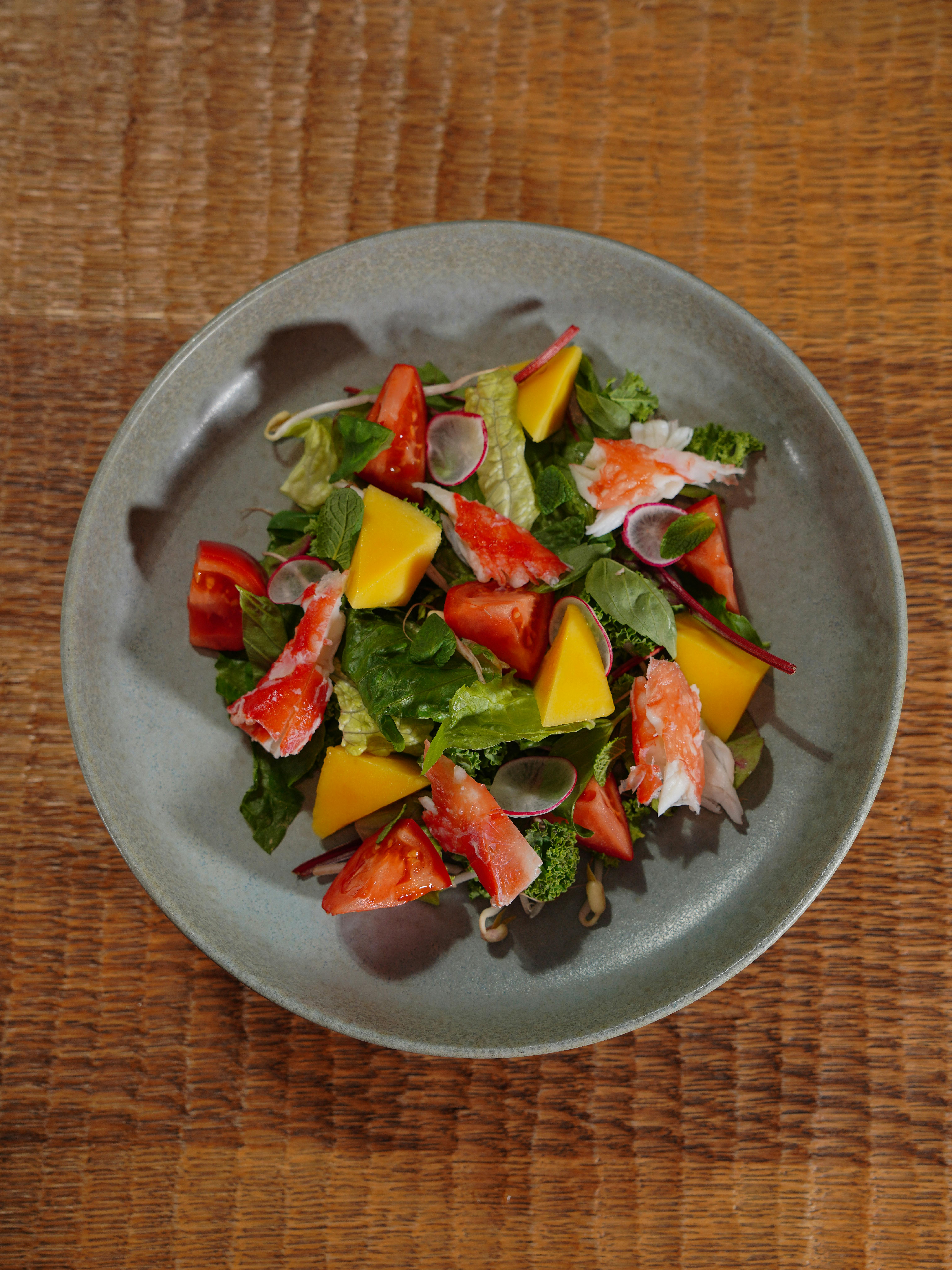👋 Click the mic button to talk to Alfred, the Todd's Seeds Gardening/Sprouting Expert – Feel free to ask him anything!
Ask Virtual Todd Anything - Click the Mic
If you’re wondering which vegetables to plant for a bountiful fall garden, look no further! We’ve got you covered with a variety of options that are perfect for the autumn season. From vibrant kale to hearty carrots, you’ll find an array of delicious and nutritious vegetables that thrive in cooler temperatures. So roll up your sleeves, grab your gardening tools, and let’s prepare for a fall garden that will wow your taste buds and fill your table with homegrown goodness.
Cool-Season Vegetables
When it comes to fall gardening, cool-season vegetables are the stars of the show. These vegetables not only thrive in cooler temperatures, but they also have the ability to withstand frost and even improve in flavor after being exposed to chilly weather. Leafy greens, root vegetables, cruciferous vegetables, and alliums are some of the best options for a successful fall garden.
Leafy Greens
Leafy greens are an excellent choice for a fall garden because they can tolerate the cooler temperatures and they’re packed with nutrition. Spinach, lettuce, kale, and Swiss chard are just a few examples of leafy greens that you can plant. These vegetables can be harvested multiple times throughout the fall season, providing you with a continuous supply of fresh, crisp, and delicious greens for your favorite salads and cooked dishes.
Root Vegetables
Root vegetables are another great option for your fall garden. Carrots, beets, radishes, and turnips are not only delicious and versatile in the kitchen, but they also thrive in cooler temperatures. Planting them in the fall allows them to develop a deep, earthy flavor and a firm texture. Just make sure to harvest them before the ground freezes to enjoy their full potential.
Cruciferous Vegetables
Cruciferous vegetables, such as broccoli, cauliflower, Brussels sprouts, and cabbage, also perform exceptionally well during the fall season. These vegetables are known for their dense heads or tightly packed clusters, making them firm and able to withstand lower temperatures. With their abundance of vitamins and minerals, they add a healthy and flavorful touch to your fall meals.
Alliums
If you’re a fan of onions, garlic, and shallots, then fall is the perfect time to grow these alliums. Planting them in the fall allows their roots to establish themselves before the cold winter months. This results in larger and more vibrant bulbs when they are harvested in the spring. The strong flavor and aroma of alliums can add depth and complexity to your culinary creations, making them a definite must-have for your fall garden.

Warm-Season Vegetables for Fall Planting
While cool-season vegetables steal the spotlight in a fall garden, there are some warm-season vegetables that can also thrive when planted in late summer or early fall. These vegetables require warmer temperatures to germinate and grow, but with some strategic planting and proper care, you can enjoy a bountiful harvest.
Beans
Beans are a versatile vegetable that comes in various shapes, sizes, and colors. Whether you prefer bush beans or pole beans, they can be a great addition to your fall garden. Planting them in late summer allows them to mature before the first frost, providing you with a fresh and delicious harvest.
Peas
Peas are another warm-season vegetable that can be successfully grown in the fall. Varieties such as sugar snap peas and snow peas thrive in cooler temperatures. With their sweet and tender pods, they make a delightful addition to stir-fries, salads, or simply enjoyed as a healthy snack.
Lettuce
Lettuce, which is typically considered a cool-season vegetable, can also be grown during the warmer months of fall. Choosing heat-tolerant varieties and providing them with some shade can help prevent their leaves from turning bitter and bolting too quickly. With different textures, colors, and flavors, lettuce can be a great addition to any fall salad.
Radishes
Radishes are quick-growing vegetables that are ideal for fall gardening. With their peppery and crunchy nature, they add a refreshing element to salads and other dishes. Many radish varieties, such as French Breakfast and Cherry Belle, can be ready for harvest in just a few weeks, allowing you to enjoy their vibrant flavors in no time.
Carrots
Carrots are a classic root vegetable that can be grown in the fall for a sweet and flavorful harvest. They require loose and well-drained soil, as well as regular watering to ensure proper growth. With their vibrant colors and incredible sweetness, fall-grown carrots are a true delight for any gardener and culinary enthusiast.
Beets
Beets are not only a vibrant and beautiful addition to your fall garden but also a nutritious one. They are known for their rich color, earthy flavor, and versatility in the kitchen. Whether you enjoy them roasted, pickled, or grated into salads, beets are a prized vegetable that can be successfully grown during the fall season.

Preparing the Soil
Before planting any vegetables, it’s crucial to prepare the soil properly. Creating a healthy and nutrient-rich environment for your plants will give them the best chance of thriving and producing a bountiful harvest.
Clearing the Garden Bed
Start by clearing the garden bed of any leftover plants, weeds, or debris from the previous season. Remove any rocks or large clumps of soil, as they can impede proper root growth and nutrient absorption. A clean and well-prepared bed will provide a fresh start for your fall vegetables.
Amending the Soil
Fall is an excellent time to amend the soil with organic matter to improve its fertility. Compost, well-rotted manure, or leaf mulch can be added to the soil to increase its nutrient content and improve its structure. This will help retain moisture, promote good drainage, and provide a favorable environment for root development.
Adding Organic Matter
In addition to amending the soil, adding organic matter directly to the planting holes or rows can further boost the growth and health of your vegetables. This could include compost, organic fertilizers, or crushed eggshells, which add valuable nutrients and minerals to the soil.
Testing the Soil pH
Before planting, it’s beneficial to test the soil pH. Most vegetables prefer slightly acidic to neutral soil, with a pH range between 6.0 and 7.0. If the soil pH is too high or too low, you can make adjustments by adding lime or sulfur accordingly. This will ensure that your plants can efficiently absorb nutrients from the soil and thrive throughout the season.

Planting Techniques
Once the soil is prepared, it’s time to consider the best planting techniques for your fall garden. Two common methods for planting fall vegetables are direct sowing and using transplants or seedlings.
Direct Sowing
Direct sowing involves planting seeds directly into the garden soil. This method is commonly used for vegetables such as radishes, carrots, beets, and peas. Follow the recommended planting depth and spacing for each type of vegetable to give them enough room to grow and mature. Keep the soil consistently moist until the seeds germinate and establish themselves.
Transplants and Seedlings
For some vegetables, starting transplants or seedlings indoors or purchasing them from a reputable nursery can be beneficial. This method allows you to get a head start on the growing season and ensures a higher success rate. Vegetables like broccoli, cauliflower, and cabbage are often started indoors and transplanted into the garden once they have developed strong roots and leaves.

Maintaining Your Fall Garden
Maintaining your fall garden is essential to ensure healthy plant growth and a successful harvest. Here are some key tasks to keep in mind:
Watering
Proper watering is crucial throughout the fall season, as the cooler temperatures and shorter days can affect the amount of moisture plants receive. Water your vegetables deeply and consistently, ensuring that the soil remains evenly moist but not waterlogged. Mulching around your plants can help retain soil moisture and reduce evaporation.
Mulching
Mulching is an excellent practice to help conserve soil moisture, regulate soil temperature, suppress weeds, and improve overall plant health. Apply a layer of organic mulch, such as straw or shredded leaves, around the base of your plants. This will also help protect the roots from extreme temperature fluctuations and maintain a more stable environment.
Weeding
Regular weeding is essential to minimize competition for nutrients, water, and sunlight. Weeds can quickly take over and hinder the growth of your vegetables. Remove weeds by hand or use garden tools to ensure that your plants have ample space and resources to grow and produce a plentiful harvest.
Fertilizing
To support healthy plant growth and optimize yield, fertilizing the soil may be necessary. Consider using organic fertilizers, such as compost or well-rotted manure, which provide a slow release of nutrients to the plants. Follow the recommended application rates and frequency based on the specific needs of your vegetables.

Harvesting and Storage
The moment you’ve been waiting for has arrived: harvesting your fall vegetables. Knowing the proper harvesting techniques and understanding how to store your crops will allow you to enjoy their flavors for weeks, or even months, to come.
Harvesting Techniques
For leafy greens, outer leaves can be harvested as needed, allowing the central leaves to continue growing. With root vegetables like carrots and beets, gently pull them out of the ground, taking care not to damage the roots. Radishes can be harvested by pulling them when they reach the desired size.
Cruciferous vegetables, such as broccoli and cauliflower, should be harvested when the heads are tight and compact. Cut the main head, leaving a few inches of the stem attached to promote side shoots for continuous harvesting. Onions, garlic, and shallots can be harvested once the tops have dried and the bulbs have matured.
Storage Tips
To prolong the shelf life of your freshly harvested fall vegetables, proper storage is key. Leafy greens can be stored in the refrigerator in a loosely wrapped bag or container, while root vegetables can be stored in a cool, dry place like a root cellar or cellar-like storage. Cruciferous vegetables and alliums can be stored in a cool and well-ventilated area.
By following these storage tips, you can enjoy the flavors of your fall garden for an extended period, even after the growing season has come to an end.
As you embark on your fall gardening journey, remember to choose cool-season vegetables that thrive in cooler temperatures, as well as warm-season vegetables that can be successfully cultivated in the fall. Prepare your soil with organic matter, employ proper planting techniques, and maintain your garden through watering, mulching, weeding, and fertilizing. Finally, enjoy the fruits of your labor by harvesting your fall vegetables at the right time and storing them properly to extend their freshness. Happy fall gardening, and may your garden flourish with a colorful array of delicious vegetables!


